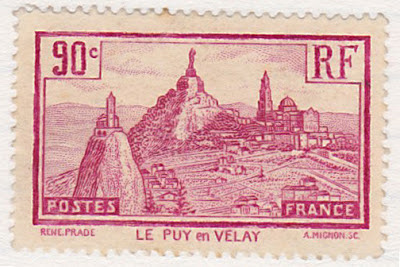Liberty
Bell on tour, 1915, with Governor Ernest Lister
Because
it is a Presidential election year in the United States and November is
election month I thought of this postcard published by Depue Morgan & Co. of
Seattle showing the Liberty Bell when it went on a tour in 1915. Depue Morgan & Company included two
other well known Northwest photographers, Asahel Curtis and Calvin F. Todd. This particular card is dated 14 July
1915 and shows Governor Ernest Lister, who was governor of Washington State
from 1913 to 1919, standing by the bell. The famous crack in the bell is prominently displayed. The photographer is identified as
Depue.
The
bell was originally cast in 1752 by the firm of Lester and Pack of London that
later became the Whitechapel Bell Foundry. Written on the bell is a quote from Leviticus 25:10 “Proclaim
Liberty throughout all the land unto all the inhabitants thereof.” It cracked the first time it was rung
and was twice recast by local workmen John Pass and John Stow. Their last names also appear on the bell.
I
wondered how big it was and discovered that it weighs a little over 1 ton and
has a 12-foot circumference (3.7 m).
When I read that the bell was first hung on a tree behind what is now
Independence Hall in Philadelphia I thought that the tree must have been almost
as impressive as the bell in order to support a ton weight and not split
asunder. Later the bell was
mounted on a stand. The first
recasting resulted in an unsatisfactory tone described as sounding like two ash
cans bumping together when the bell was struck so it was melted down and recast
again. It is unknown exactly when
or why it cracked the second time but it is thought an error may have been made
in the alloy. Both Pass and Stow
were relatively inexperienced at casting, Stow being only four years out of
apprenticeship.
There
are several stories relating to the second cracking of the bell. One was that it cracked when it was
rung upon the death of Chief Justice John Marshall in 1835. Another claims that the bell was
damaged while welcoming Lafayette on his return to the United States in
1824. Still another account, the
most likely one, is that it cracked sometime between 1841 and 1845 on either
the Fourth of July or Washington’s Birthday. The bell was rung on both those days each year. Following the second time the crack was
filed out in the hope that by doing so the bell could continue to be rung
without further damage.
A
story titled “Fourth of July, 1776,” written by George Lippard is the beginning
of the bell becoming a relic of American independence. No bells were actually rung on the 4th
of July but bells were rung on July 8th and tradition holds that the
Liberty Bell was one of those rung on that day.
The
home of the bell is in Philadelphia, Pennsylvania but years ago requests were
often made for it to travel to various states so that all people could see it. Beginning in 1885 the city of
Philadelphia allowed the bell to go on tour to expositions and patriotic
gatherings. A bit hard to imagine
by 1885 it was already well over 100 years old. It attracted huge crowds everywhere and it is estimated that
over 10 million people physically touched or kissed it. When the bell returned from the Chicago
World’s Fair in 1893 additional small cracks were discovered. Unfortunately
people also tried to pry pieces off the bell as souvenirs further damaging parts
of it including the famous already existing crack seen on the card above. To prevent more damage it was decided
that the bell should be kept in one place and was even in a glass case for a
period of time as additional protection.
A special request was made for the San Francisco Fair in 1915 and since
the bell had not been west of the Mississippi River permission was
granted. This was to be the last
tour with Seattle as one of the stops along the way.
The
bell has appeared on coins such as the bi-centennial dollar and a stamp
celebrating the sesquicentennial in 1926.
It is currently featured on a Forever Stamp first issued in 2007. Replicas of the bell have been made and
many can be found near state capitol buildings throughout the United
States. I liked this quote from a
book about the history of Independence National Historical Park by Constance M.
Grieff that reads: “Like our
democracy it [the bell] is fragile and imperfect, but it has weathered threats,
and it has endured.”
There is more
history and interesting information at:
http://en.wikipedia.org/wiki/Liberty_Bell
Are you United States citizen and eligible to vote? Election day is November 6. Some of us vote ahead by mail and others will go to a polling place. Please vote. Voting is our right and privilege. It is how democracy works.

































